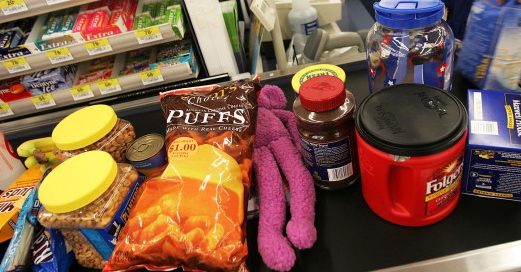
The Food and Drug Administration released two of the five major regulations tied to the Food Safety Modernization Act for public comment on Friday, the second anniversary of the bill's passage. The newly released rules, arguably the most important two of the five, span a whopping 1,236 pages and regulate food safety protocols for produce and manufactured foods, respectively.
In a conference call with reporters on Friday, Dr. Margaret Hamburg, the commissioner of the FDA, called the release of the regulations "a major step in implementing the landmark, bipartisan Food Safety Modernization Act."
"They represent significant advances toward the administration's goal of strengthening our food safety system to better protect public health," she said.
Consumer advocates outside the agency greeted the release of the two rules, which the FDA did not announce in advance, with a great deal of relief. Many have harshly criticized the FDA and the Office of Management and Budget, which vets all regulations before their release, over the past year for their failure to release the rules to the public for comment within the timeframe mandated by the bill. (One consumer advocacy group grew so impatient that it sued both agencies in federal court.)
Mike Taylor, the FDA's head of food safety, explained the two sets of regulations in broad strokes on a Friday conference call. The produce regulations, he said, try to eliminate potential contamination of fruits and vegetables by establishing guidelines for how farms deal with water, worker hygiene, materials put into the soil and packaging of products. Taylor emphasized that the guidelines were flexible enough to be implemented by farms of all sizes.
"We've said all along that we do not want regulation that is 'one size fits all,'" he said.
In practice, that means that the produce standards don't apply to all farms. (The word "exemption" appears 180 times in the produce rule [pdf].) Taylor noted that the rules only apply to farms that sell produce that is often eaten raw, such as berries or melons. Farms that grow produce that is typically cooked before it's eaten -- potatoes, for example, or green beans for canning -- are exempt, as are farms that are extremely small.
Taylor described the regulations of manufactured foods [pdf] as focused on the universal adoption of Hazard Analysis and Critical Control Points (HACCP) plans that outline comprehensive means for ensuring a factory or warehouse's food is safe. Taylor approvingly noted that this is a strategy that "the food industry has developed over the last couple of decades as a way to reduce risk."
The text of the regulations was far too long for reporters to conduct anything but a cursory review between their release Friday morning and the conference call at noon, so few asked about any specific provisions. Those who work in food safety have a long weekend of reading ahead, and much work to do between now and the end of the 120-day public comment period that will follow the official publication of the new regulations on Jan. 16.
How quickly the rules can be implemented, once they're finally combed through, is yet another question. During the conference call, Taylor spoke at length about the logistics of keeping deer out of farms, for example, and there was no hint of when the other three important sets of regulations tied to FSMA will be released. More troublingly, Hamburg and Taylor repeatedly failed to name any specific figure when asked how much money full implementation would cost the government. "Resources are going to continue to be an issue," Hamburg admitted.
An estimate from the Congressional Budget of the Office pegged the cost at $645 million a year by 2015, but budget constraints in Washington have kept the FDA from getting any significant increase in funding for food safety. So Hamburg and Taylor's caginess may be a sign that they expect implementation to "cost the government" whatever Congress is willing to pay -- which may be very little. It is unlikely that the FDA can inspect food facilities or that farms can comply with the new regulations without additional funding.
That didn't dull the excitement of food safety advocates who've been begging the FDA to release the proposed regulations for many months, however. "President Obama today has taken an important step forward in the fight to save lives, prevent foodborne illnesses and lower health-care costs," food safety expert Erik Olson of Pew Trusts said in a statement. "We applaud him and the Food and Drug Administration for taking major action to help fulfill his promise by releasing two important sets of rules to implement the law."







